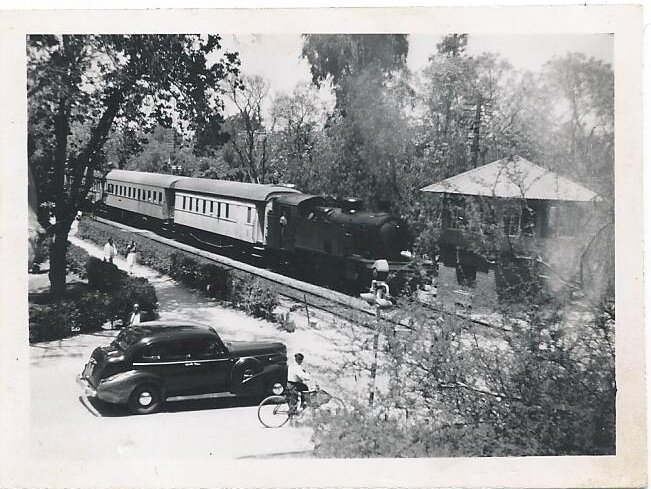The Origins of Maadi: History of a Cairo Suburb
By Kenzy Fahmy
Maadi’s history is a long and fascinating one, much more so than one would imagine. Every dive into the story of its origins leads you deeper into a labyrinth of pre-dynastic history, the birth of a modern Egypt, and the amazingly eccentric and wealthy characters that helped build what became affectionately known as ‘the garden suburb’. Even now, Maadi remains one of Cairo’s most peaceful and well-kept areas, a haven for its diverse expat community and an escape from the chaos of Egypt’s capital. But Maadi has changed drastically over the last hundred years, evolving from a few bungalows and villas spread out over wide plots of farmland, into a populated, high-rise filled neighbourhood that would most likely be unrecognizable to its original residents.
The name comes from the Arabic ma’adeya, meaning ferry, perhaps due to it being a popular port for the ferries that crossed over to the west bank of the Nile. The location was even an important stop along the ancient caravan routes that travelled between Arabia and Africa. The ma’adeya is still running and is definitely an interesting experience for anyone feeling adventurous enough; it crosses over to an area called Manial Sheha, which leads on to Sakkara and Dahshur, two of Egypt’s most beautiful and perhaps most underrated agricultural and archaeological sites.
1945 map of Maadi - Image Credit
Maadi’s modern history can be traced back to around 1904, but it has far deeper roots in Egypt’s pre-history. Evidence of pre-dynastic communities that lived around 3500 years ago has been found in excavations carried out between the 1930s and 1950s. Traces of these can still be seen until today, although the substantial amount of development that has taken place in recent years has done a fair job at destroying much of what was left. There is apparently a small plot of protected land right by the Maadi Grand Mall that still holds some of the Neolithic artifacts and antiquities, with only a small and badly-deteriorated sign serving as a half-hearted indication of its presence.
Remnants of the Neolithic Maadi culture - Image Credit
Before the turn of the 20th century, Maadi was made up of mostly agricultural land, with fields and canals stretching into what was once still desert and all the way south to Helwan. It was only following the construction of a new railway connecting Bab el-Louk to Helwan that the development of Maadi really began.
Competition for who would get to run the new line was fierce, but it was the Suares family, or more accurately, Suares Group that won the concession to extend and run the Egyptian railway lines, including the Delta line of lower Egypt and the Aswan-Qena line in the south. In 1900, the brothers sold their concession to the British and joined the board of UK-based Egyptian Delta Light Railways, managing the Egyptian lines alongside their new British partners. The Suares family was absolutely pivotal to the foundation of Maadi, arguably even Egypt, and while a few members lived in Alexandria and elsewhere in Egypt, it was the three brothers, Felix, Joseph and Raphael, who lived in Cairo and managed to create an impressive legacy in both banking and real estate development, building on the already highly celebrated work of their father Isaac Suares.
But it wasn’t the Suares brothers alone who built Maadi. The Suareses were part of a consortium of Jewish families that headed the Egyptian Delta Land and Investment Company, a sister company of the Egyptian Delta Light Railways, along with the Cattauis, Mosseris and the Menashe family. With the help of retired Canadian officer Captain Alexander J. Adams, who was responsible for designing the colonial English layout and town planning, they set the foundation for the development and growth of the garden suburb that would become Maadi.
The Mosseri cousins had bought up large swathes of land on either side of the new line connecting the northern and southern ends of the city, which they then sold to the Egyptian Delta Land and Investment Company. Between December of 1904 and January in 1905, the Mosseris sold around 800 feddans (acres) to the company at almost 20 L.E. a feddan. By 1911, there were more than 30 homes in Maadi, each with its own spectacular garden; a fundamental rule of Maadi’s urban planning was that a strict ratio of garden to built-up area be maintained.
Railroad crossing on El Nahda - Image Credit
Over the coming forty or fifty years, the garden suburb attracted residents that were amazingly diverse, with flourishing British, French, Greek, Italian and Jewish communities that included some of Cairo’s most influential ambassadors, bankers, artists, and even royalty; the list of names is impressive, and the stories behind those names even more so, it would take a lifetime to go through them all.
But with the 1952 revolution and the ensuing wave of Egyptian nationalism, the face of Maadi was stripped of its royal and colonial identity, with street and square names being changed to fit Egypt’s new national pride and modern high-rise buildings being introduced to make room for a growing population. Although much of the original neighbourhood has disappeared as a result, including many of its historic villas and gardens, there are still fragments of Maadi’s former beauty all around us.
Century-old Eucalyptus trees proudly line Canal Street, named after the Khashab Canal that used to run north from Helwan until it was filled and turned into a public garden in the 80s. On the corner of Road 13 and Orabi lies the Meyr Biton Synagogue, sitting quietly on its little plot of land, all but abandoned; a memento of Maadi’s once-vibrant Jewish community. A Friday morning walk through Sarayat and Sakanat el Maadi, two of the neighbourhood’s oldest areas, will reveal some of the gorgeous villas that were built closer to the 40s and 50s, many of which are abandoned but still standing, with wild gardens and remnants of past lives left behind by the families who once resided there.
And of course, there are the trees. Maadi’s love affair with her trees is perhaps the most enduring legacy left behind by her founders and early residents. She remains, until today, one of Cairo’s greenest neighbourhoods, a fact that becomes especially clear in the spring when the streets are filled with the beautiful red and purple blossoms of her royal poincianas, orchid and silk floss trees.
Many of the photos and details in this article are thanks to the efforts of Samir Raafat, author of “Maadi 1904-1962: Society and History of a Cairo Suburb”.







